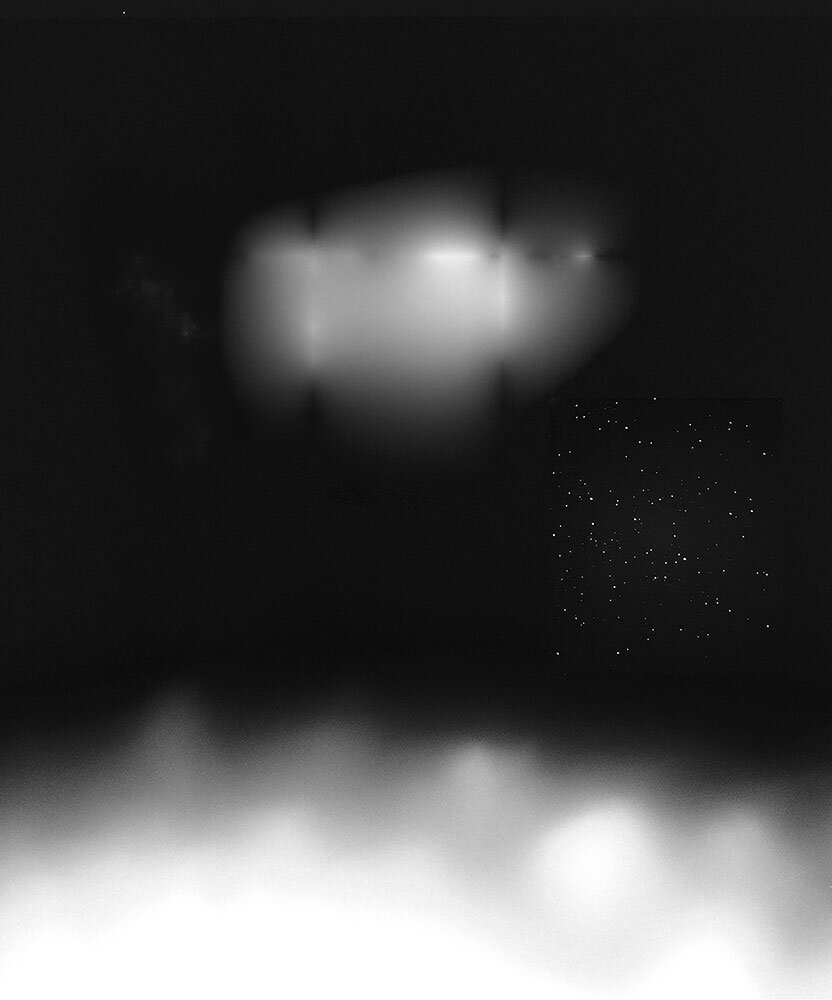A Conversation with Arcin Sagdic
There is something extremely intriguing when you observe a piece by Arcin Sagdic. Something beyond the image itself takes you to another level of understanding from the reality you see. And when you dive into his approach to art, you understand why. For the Berlin-New York-based artist, a new article about the Higgs Boson particle can well be the source of a newborn art piece, as he takes his inspiration from fields such as quantum physics and gravitational theories.
By manipulating negatives through different techniques he creates images that explore the boundaries between diverse unseen realities.
In Summer 2019 he presented the exhibition Asphyxia shown in LaBase de la Marina in Valencia, Spain. A project composed of abstract photography, paintings, performances, sculptures, and installations that created a dystopia which represented the consequences of plastic abuse in the world.
With a strongly defined aesthetic, this artist is the way to go and many publications know it. British GQ Style, 10+, The Guardian, Numéro… had already required his vision and he has proved that ionized atoms can go with anything, even fashion.
GATA: As you said, most of your work comes from ideas taken from quantum physics and from gravitational theories. Where does this interest come from?
ARCIN: I was fascinated by the aesthetics of molecular captions in scientific books since I was young, and a curiosity about scientific topics developed over time, which provided a solid foundation for a statement in my works. My approach is fiction masked in non-fictional aesthetics. It is an idea of how my work should be. How I’d like myself to be translated within the multi medial field.
“My approach is fiction masked in non-fictional aesthetics. ”
GATA: As far as we know, you are a self-taught photographer. Is that true? Would you recommend this to someone that is beginning to learn photography? Do you think this has given you more freedom in terms of creativity?
ARCIN: Yes, I’m a self-taught photographer. I think it depends on each person’s character - for me it has always been important to have my own space and dreams - not to bother too much about traditional opinions.
GATA: This past Summer, you and the artist Yasmina Benabdelkrim presented Asphyxia in LaBase de la Marina in Valencia, Spain. A multidisciplinary exhibition project that showed how plastics were taking over the planet and which had a great reception.
Do you think art should more often make the public think and be more aware of the environment as well as other kinds of transcendental topics?
ARCIN: Artists have always helped the public look in places they didn’t think of looking. I’m just trying to do the same for the topic of our age, how we treat our environment. Asphyxia was for me a deeper understanding and imagination of how plastic could have its impact on our evolution. We tried to bring mankind into the position of being a metaphysical force that underestimates its impact on this big, yet habitable planet.
GATA: Manipulating the photography once is taken through different processes is something very characteristic of your artworks, how is that conceived? Do you first think about the photography itself and then you experiment with the techniques, or do you know beforehand what the techniques that you are going to use will be ?
ARCIN: The process of preparing a caption that I can manipulate chemically is mostly based on a prevision that usually comes up on set with all participants, the music and other factors that collide and bring a natural idea of how to capture what and which process to harmonise an all together fluid story. Leaving space for lucky accidents to each photograph is essential. It is meant to be a realistic glimpse into our physic’s fragility. Human mankind’s comfortability has taken the sense or self-reflection ability of our species. We truly believe in our species’ immortality and treat our most important spaceship (called earth) like a replaceable one. Especially nowadays we have to conceive that earth doesn’t need human to remain the only way out of this vicious circle is to be grateful to nature and to consider future longer than human average life expectancy.
“Especially nowadays we have to conceive that earth doesn’t need human to remain the only way out of this vicious circle is to be grateful to nature and to consider future longer than human average life expectancy. ”
GATA: You have done motion artworks too, what does video provide you, that the photography can not?
ARCIN: I always envisioned to merge photography and sound which brought me to a natural conclusion to evolve more into my motion films. I try to intensify a sequence that is normally digested within seconds. If you bare a second and look closer thus give time you will grasp the story and see so many more details that often remain hidden. I demand patience.
GATA: GATA is really interested in cinema and we always ask this question to all the creatives, could you recommend a movie that made, in some way, an impact in your life or influenced your art?
ARCIN: “2001: A Space Odyssey | 1968, Stanley Kubrick” is a must!










